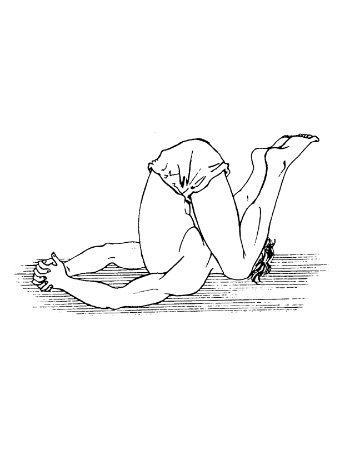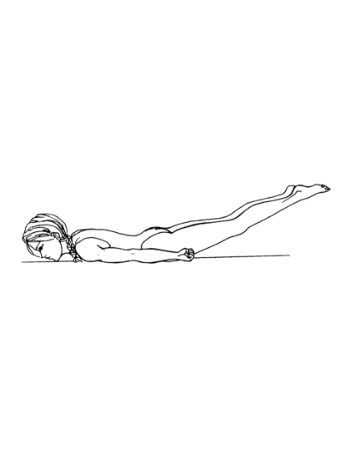The Utkata Kurmakasana, also known as the Difficult Tortoise Posture, is classified as a difficult pose. It comes from two words, Utkata, which means powerful, and Kurmasana. Kurmasana comes from the Samskrta word kurma, which means turtle, and asana, which means posture or pose. This pose is ideal for meditation and is said to be the “best of all a’sanas” because it develops all of the glands in the body, preparing the entire body for samadhi. It also strengthens Man’ipu’ra Cakra, and is good for the contraction and expansion of the muscles and limbs, and helps control anger.
This pose will be a challenge for beginners as it requires a high degree of flexibility and practice to get into the full Kurmasana pose.
Preparation for Utkata Kurmakasana.
Daily Practice of kaoshiki will help to limber up the joints. Extensive leg stretches are essential to be able to lift the legs over the shoulders. The forward and backward bend posture will be crucial to practice daily. Limbering up the hip joint will benefits. allow for easy entry into Kurmasana. The most difficult aspect of the posture will be to remain in balance vertically.
How to Execute Utkata Kurmakasana:
- Bring the right leg over the left shoulder.
- Then bring your left leg over the shoulder and rest It on your right ankle.
- In the namaska’ra pose, try to position all of the fingers firmly and direct them forward.





No Comments